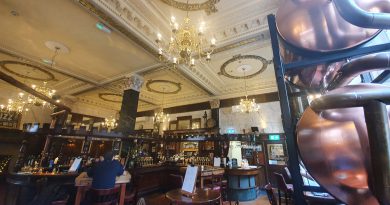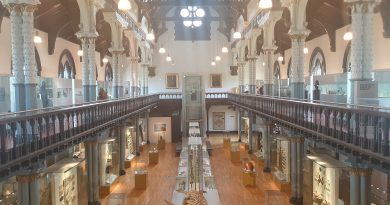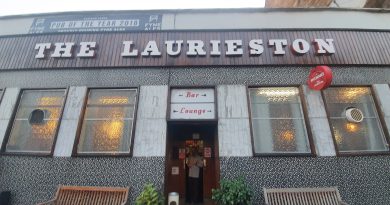Glasgow – Tenement House
This is the Tenement House in Glasgow, now in the care of the National Trust for Scotland. As National Trust members can also gain access to properties in Scotland for free, I thought that I’d pre-book a ticket since it’s only open on Fridays to Sundays.
The National Trust have displays on the ground and first floors. They perhaps don’t need so much space for their shop and cafe given the limited area they have to work with, but I suppose it all raises revenue for the charity. The volunteers (or staff, I’m not sure whether they’re paid) here are friendly and engaging, so it all felt welcoming.
An exhibition room in one of the two flats that were on the first floor. The other flat, which comprises of four rooms, has been returned to what it might have looked like at the beginning of the twentieth century.
The bathroom in the flat. I hadn’t quite realised that this tenement was one which was built in the 1890s for the middle classes, I had for some reason thought that it was a block which had been lived in by the poorer members of society. I asked the friendly volunteer about this and she explained that this was quite an aspirational development and that many other people in Glasgow would have lived in much worse conditions. I think my confusion was because I associate tenements in Glasgow with something rather less salubrious. Anyway, as bathrooms go, it’s not bad at all and would have felt quite state of the art at the time.
The bedroom.
What a lovely idea, a bedroom in a cupboard. There’s one in the room the other side as well.
The kitchen area with its large range. The property was lived in by Agnes Toward between 1911 and 1965, before she gifted it to the National Trust for Scotland.
And the living room.
There wasn’t a vast amount here to see and so I think I’d have been disappointed if I’d paid full price, which was £8.50 for an adult, probably too much given a visit isn’t going to last more than half an hour. But, given that I got in free, I thought that this was an interesting diversion for a Friday morning. It is though perhaps not a typical example of how the average Glasgow resident would have been living in the late nineteenth century, although to be fair, most National Trust properties aren’t really very good examples of how the poorest lived.













